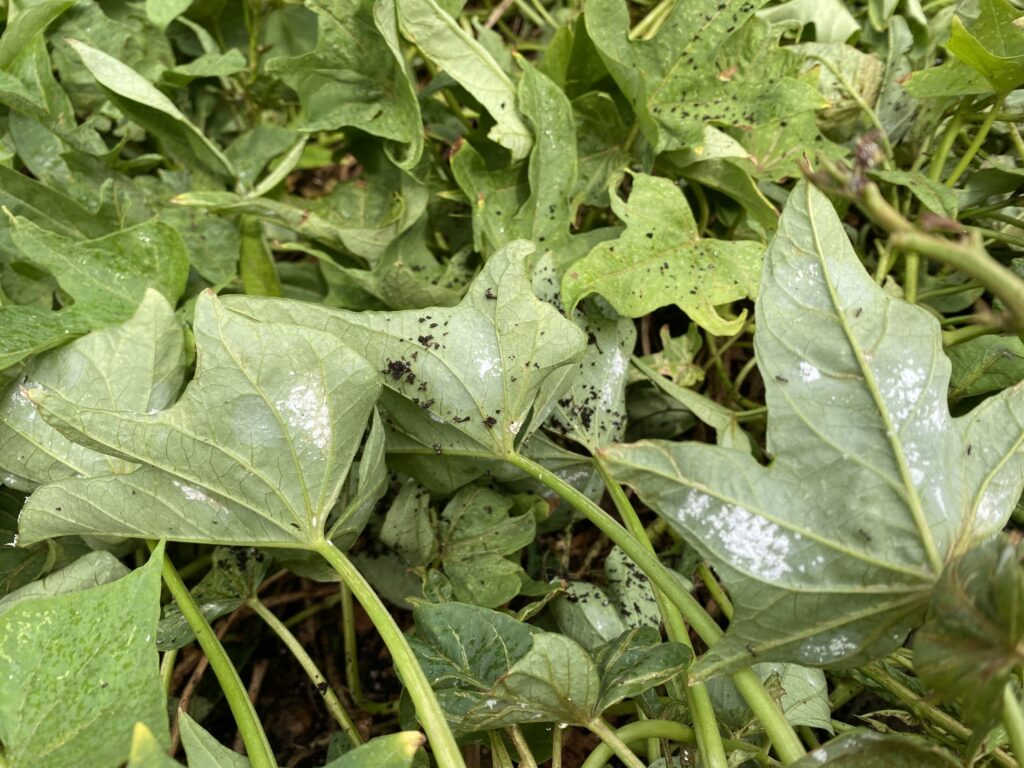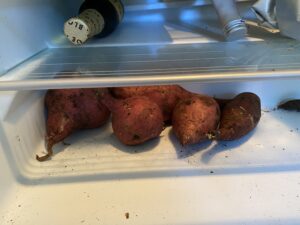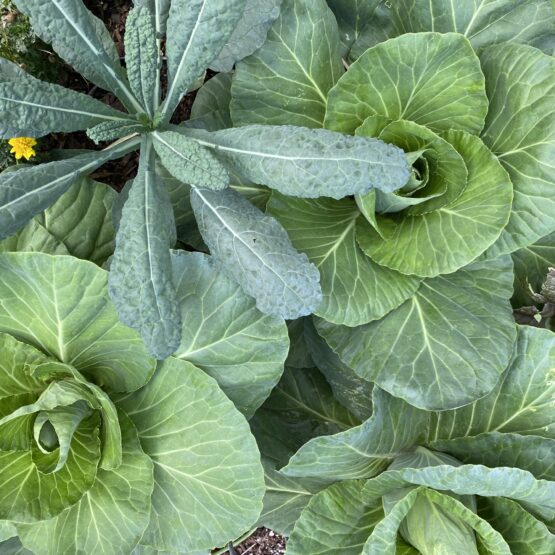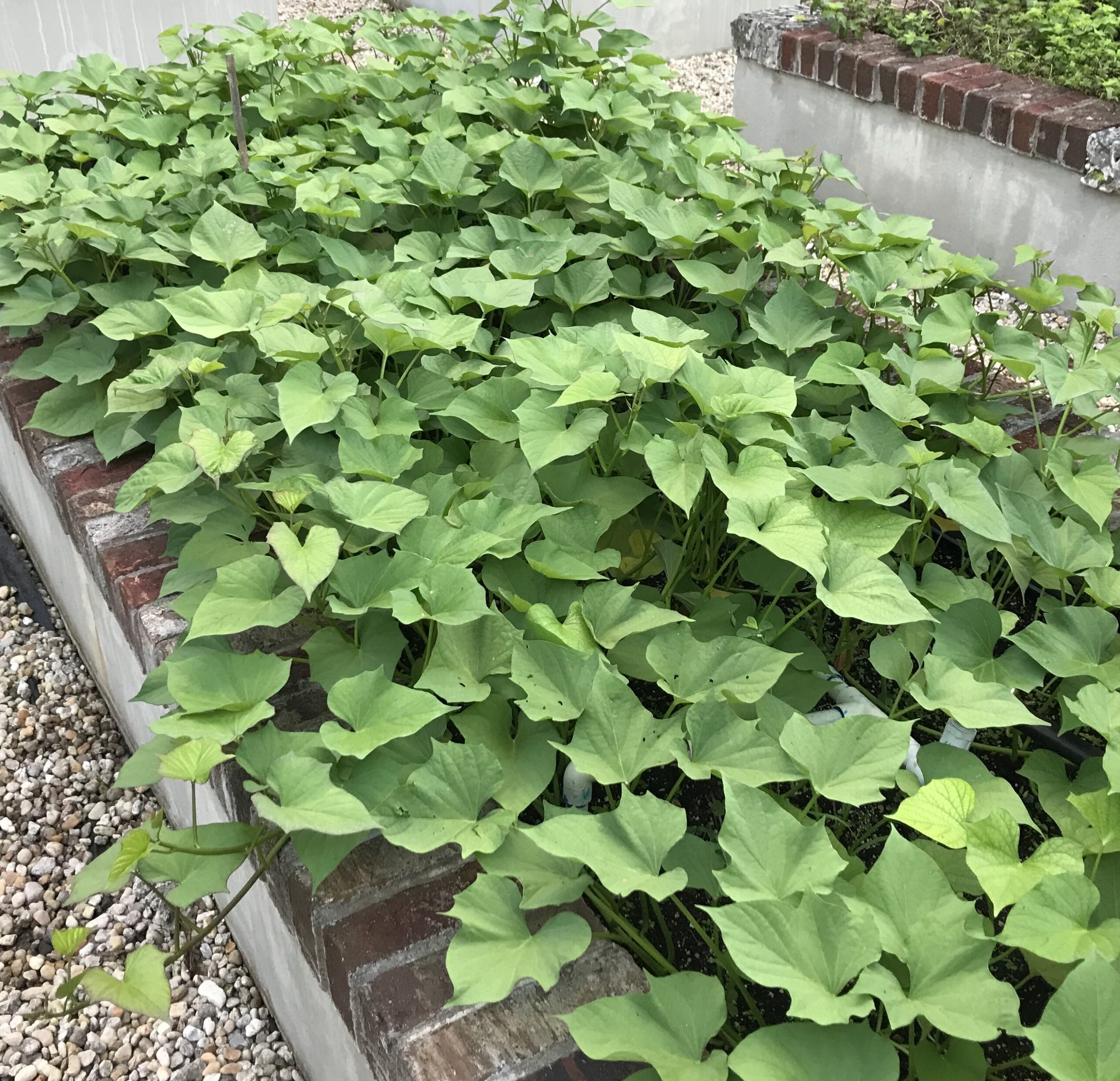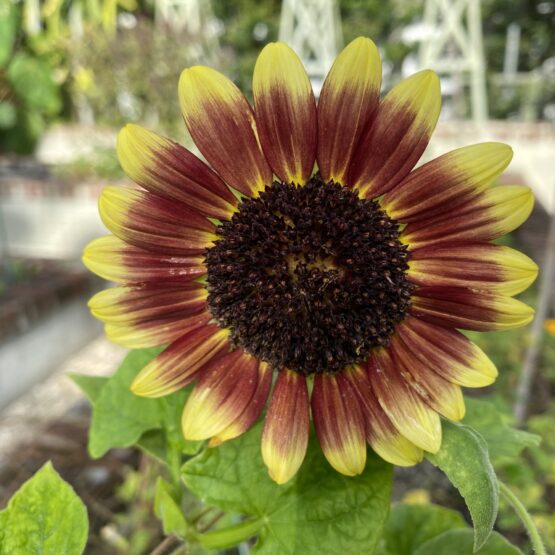Sweet potatoes love our South Florida climate, and we love them back! They are such a fun and easy crop to grow here, from getting them started, to watching them thrive, to the treasure hunt of harvesting, and then of course using them in a variety of ways to please the palate. Here we will take you through this process, step-by-step, and provide some helpful tips along the way.
The sweet potato does not belong to the same family as the common white potato. Sweet potatoes are a member of the morning glory family and are actually a root and not a “potato” at all (but don’t worry, we’ll always call them a “sweet potato”). Compared to the white potato, sweet potatoes look and taste differently, they are definitely more nutritious (see “Sweet Potato Health Benefits”), and the growing method is not the same. Sweet potatoes and yams are also different types of plants though their names are often mistakenly interchanged. And an interesting fact: the leaves of the sweet potato plant are edible; when the crop is grown in the summer months it offers an alternative green to enjoy.
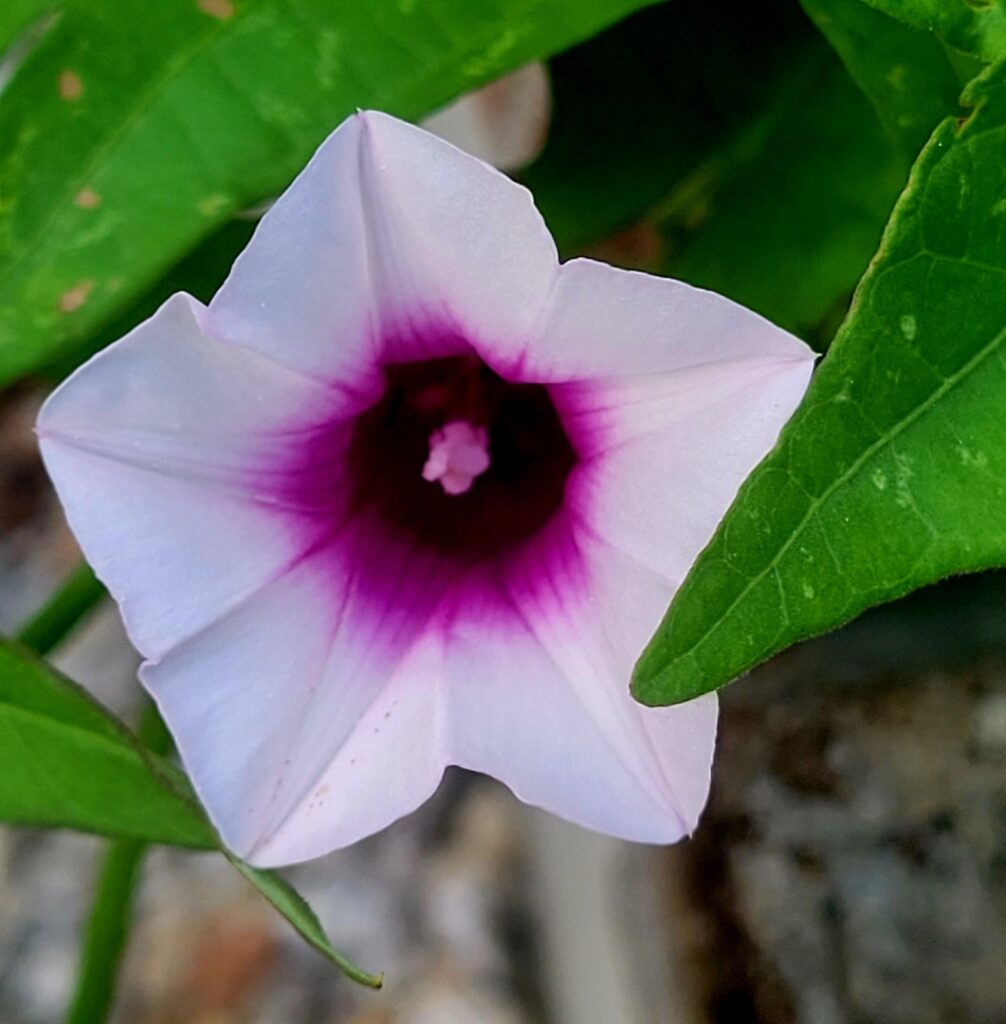
Sweet potato flower – proud member of the morning glory family
Growing Sweet Potatoes
How do you start sweet potatoes? It’s so easy. We used to think that you had to buy “slips” – stems with leaves – from established plants. That’s hard to do in South Florida, easier to do if you order from or travel to Georgia or similar parts north. Now we know better! You can start your own plants from a potato – our favored method is to lay one on its side, immersed halfway in water, and watch it grow the slips for you. This way you can also choose a variety that you particularly like from the store and reproduce it. Make sure it’s a good, healthy specimen. (Be careful you’re not buying yams). After four to six weeks, you can either plant the whole potato or preferably, twist off each stem (slip) and plant them in the ground. Believe it or not, you only need one potato to start what will become a fully thriving (actually overgrowing!) bed of plants.
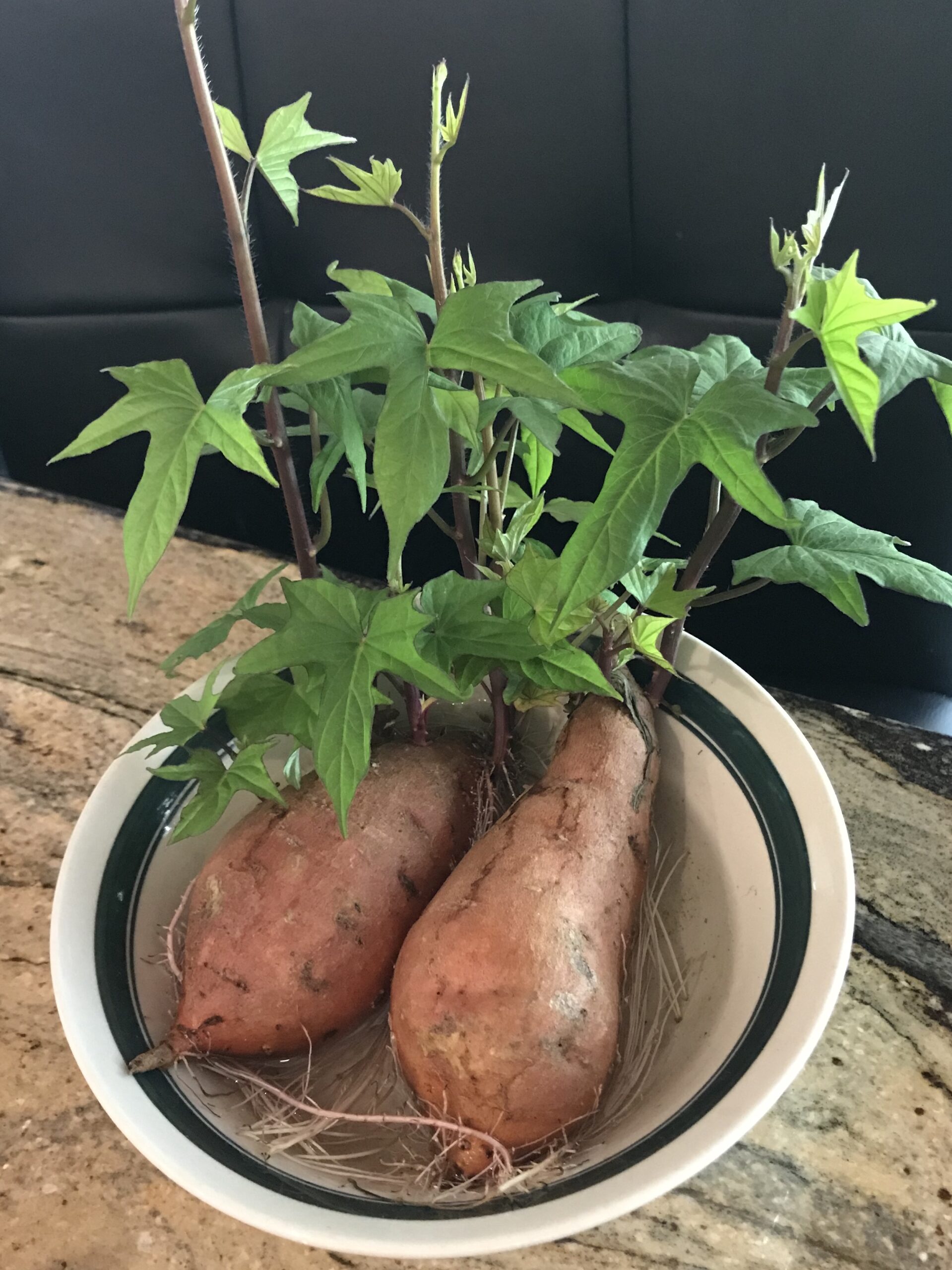
Starting new plants couldn’t be easier!
Choose a spot in full sun for your sweet potatoes and plan for consistent irrigation. They will require a considerable amount of space for one crop – we dedicate a whole raised bed to them, as they will take it over anyway. Soil should be loose and well-draining; while slightly acidic is recommended, they just don’t get that in our naturally pH-high land of South Florida and seem to do fine anyway. Work compost or a balanced fertilizer into the soil before planting; this should be the only time you need to fertilize. We do not build mounds to plant them in as some growers will recommend (for maintaining the warmth of the sun in the spring) – haven’t found that necessary so we just plant them in our flat beds.
It’s fun to plant the slips. While you could get away with just one to start a whole crop (believe it or not) in a bed, having a handful speeds up the growth process. Dig a shallow trench for each slip and lay it down, bury the root ends, and allow the leaves to lay on top of the soil. Water well at first, and consistently throughout the life of the plants until about a month before harvest. You don’t want water-logged splitting (or worse, rotting) sweet potatoes at the end of all your work and patience. Six or eight slips per bed is plenty to get started.
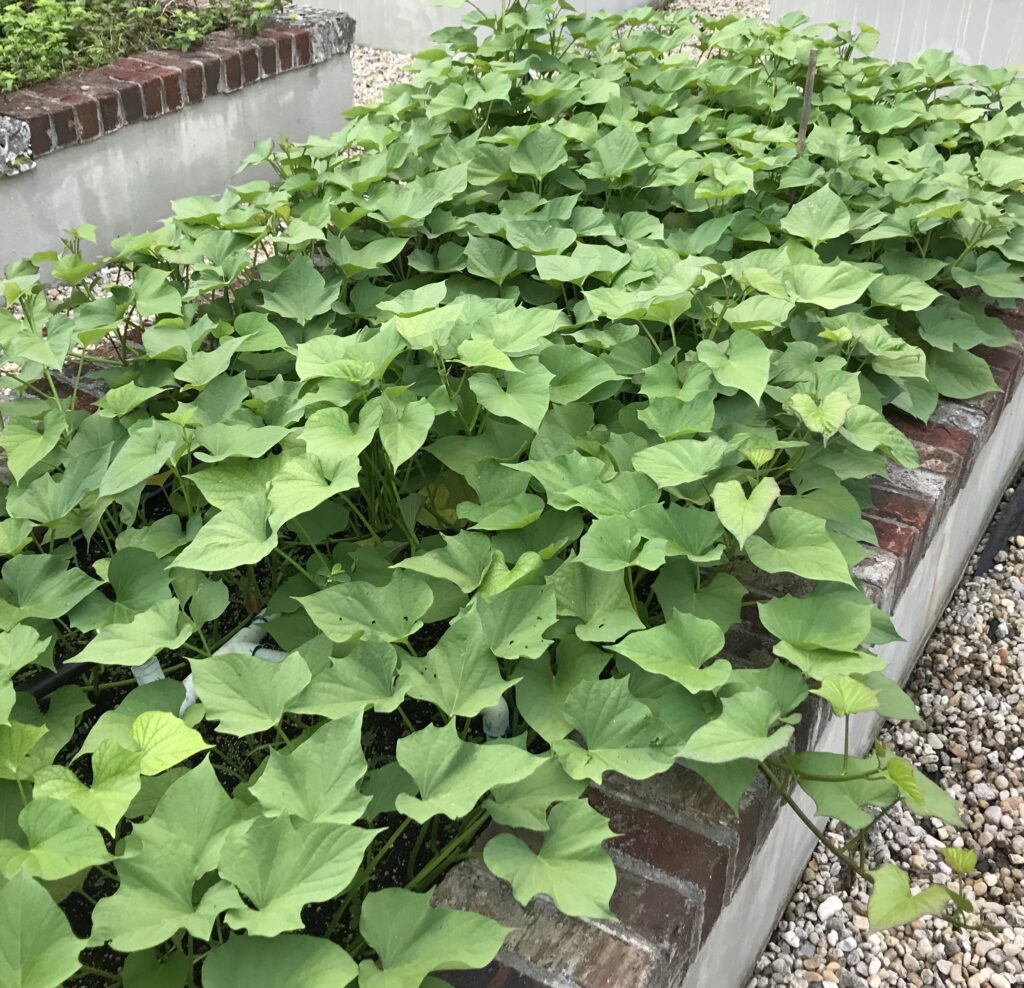
Grown from one sweet potato
We were surprised to learn that sweet potatoes can be planted at any time of the year in South Florida. We had always grown them in the hot summer months, and admittedly they love the heat and do grow faster then, but it is possible to plant and maintain crops (and harvests!) at other times of the year in our warm sunny climate. Also consider the notorious whitefly – invading your crop which is most likely in the heat of summer. Standing out in the hot sun, spraying the underside of all those leaves with water or natural pest deterrents (every few days), is not exactly fun. We’ve grown successful year-round crops for four years now.
The warmer the weather you grow your potatoes in, the sooner they will be ready to harvest. A summer crop takes about four months, a winter crop can take up to six months from planting to harvest. You will have to be the judge as you investigate their size underground for their readiness. We find here that a harvest can last over a couple of months as the potatoes vary greatly in size, so every week or so we pull out the beauties that are ready. When a good amount of the leaves are yellowing, your crop is done.
Now, by “year-round” growing we do not mean keeping the same crop going for a year. We mean that you can plant them at any time in South Florida; you can even cultivate “slips” from your current crop to start a new one – elsewhere. Once we have completed a harvest, we pull the crop out completely and thoroughly to prevent volunteers from popping up later. We do not want a continuous crop growing in the same bed as it will be difficult to determine the age of the potatoes and older ones can spoil and harbor bacteria. The bed can also become a haven for insects that are drawn to sweet potatoes. And lastly, your crop will have drawn specific nutrients from the soil and depleted it to a certain extent. We will grow some other type of vegetable but not sweet potatoes in the same bed again for at least two years, as we practice crop rotation with them.
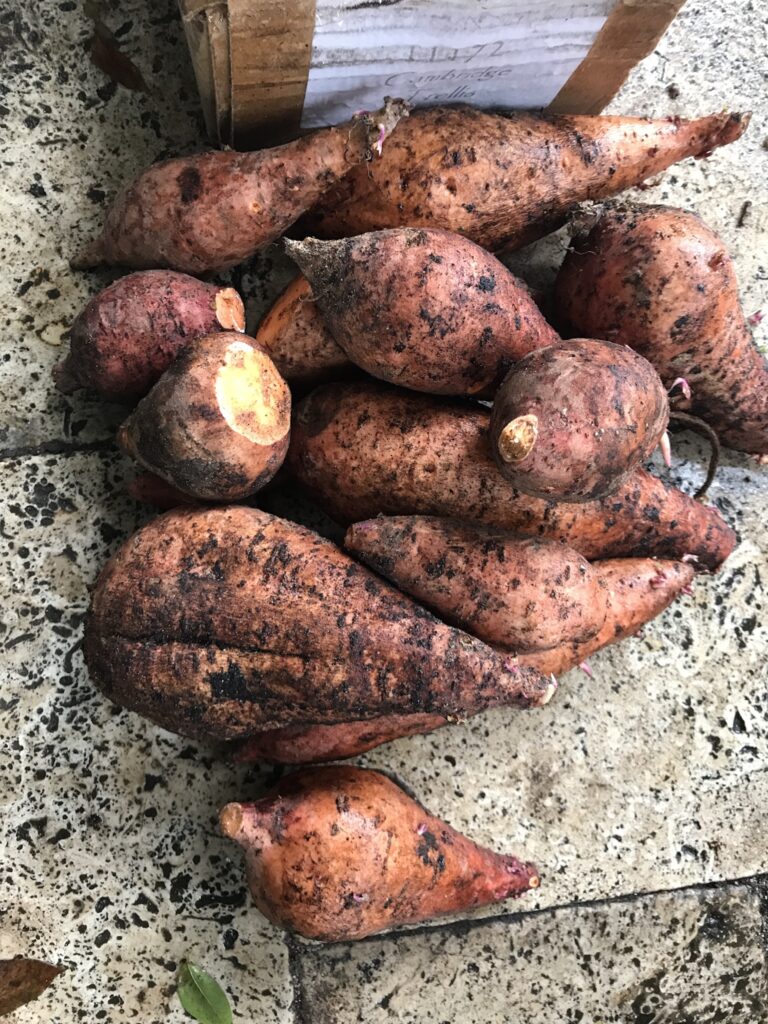
Lovely harvest!
The best way to harvest them is by hand; otherwise, you risk damaging potatoes with tools. (Any potatoes that have been scraped or nicked during harvest should be used right away). Reach under the soil and gently pull the potatoes that are ready and leave the rest to continue developing – it’s that simple!
There is a step to take after harvesting, which is curing! Some of our gardeners do not bother with this and enjoy the potatoes fresh from harvest. Others like to put them through the curing process as it allows the sugars to develop and thus enhances the taste. The two steps are to basically keep them in a very warm, dry place for two weeks and then in a cool, dry place for another two weeks. But not as cool as a refrigerator, which according to research is never a good place for sweet potatoes at any time as they tend to rot faster. If you are fortunate enough to have a wine cooler, that’s an ideal place for the second phase of curing! Otherwise, having a 50-degree location in South Florida is going to be a challenge, you’ll have to be creative. Barter for space in a wine cooler maybe? – or at least keep them in the coolest space in your house.
Last but not least, it’s time then to enjoy the fruits of your labor. Sweet potatoes are an awesome and nutritious food to make a variety of dishes with. Besides a slow-roasted whole sweet potato in the oven, a favorite is sweet potato wedges with an avocado-yogurt-lime dip. The sweet potato is also a regular in our Steamed Vegetables with Miso Tahini Sauce recipe. Of course, you can’t have masaman curry without them either. Then there’s sweet potato and caramelized onion puree (OMG!) for the Thanksgiving table. Oh, and don’t forget the sweet potato pie! Enjoy!
You Might Also Like...
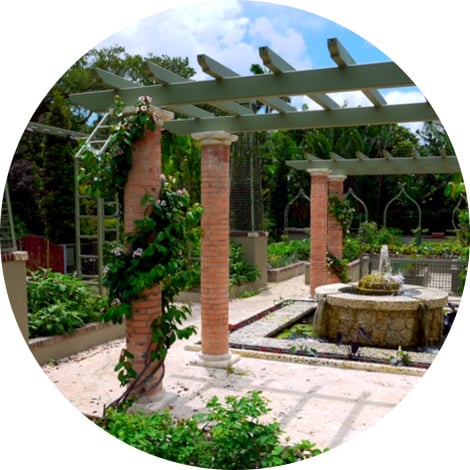
We are a small group of South Floridians who share a love of organic gardening, cooking and leading a healthy lifestyle. We garden together in Miami on a weekly basis year round, and enjoy the labor, harvest and feeling of community that this provides us. We are learning together what it means to grow food in South Florida, with our unique climate and seasons, which are so different than the rest of the country. This website is a venture in sharing information and resources relevant to gardening (and enjoying the harvest) in our South Florida environment. We hope you will find it useful!
